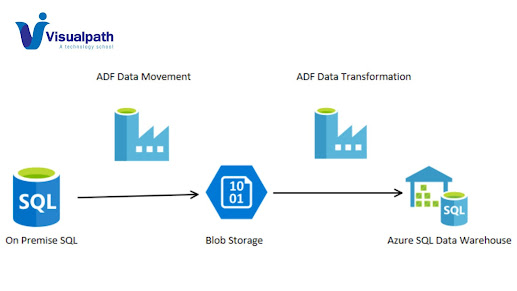Azure Data Engineering (ADE) : Databricks and PowerBi
In the era of data-driven decision-making, organizations are
increasingly turning to advanced data engineering solutions. Microsoft's Azure ecosystem
provides a powerful combination of services, with Azure Data Engineering,
Databricks, and Power BI standing out as a formidable trio for processing,
transforming, and visualizing data at scale - Azure
Databricks Training
Azure
Data Engineering Overview:
Azure Data Engineering serves as the foundation for building
robust data pipelines. It offers a comprehensive set of services to ingest,
transform, and store data at scale. Organizations can leverage Azure Data
Factory for orchestrating data workflows, Azure Data Lake Storage for scalable
data storage, and Azure SQL Database for high-performance relational databases.
1. Databricks: Databricks, built on Apache Spark, is
a cloud-based analytics platform designed for big data processing and machine
learning. Integrated with Azure, Databricks provides a collaborative
environment where data engineers, data scientists, and analysts can work
together seamlessly. - Azure
Data Engineering Training
2. Integration with Power BI: Once data is processed and
transformed in Databricks, the next step is to bring these insights to life
through compelling visualizations. Power BI, a leading business intelligence tool,
seamlessly integrates with Azure services, including Databricks.
Key Steps
in Azure Data Engineering with Databricks and Power BI:
1 Ingest Data: Utilize Azure Data Factory to ingest data from various sources into Azure Data Lake Storage or other storage solutions.
2. Data Transformation in Databricks: Leverage Databricks notebooks to perform complex data transformations, aggregations, and machine learning tasks using Apache Spark.
3. Store Processed Data: Persist the transformed data back into Azure Data Lake Storage or other storage solutions for accessibility and archival purposes.
4. Connect Power BI: Configure Power BI to connect to the processed data in Azure Data Lake Storage or other storage used in the Databricks environment.
5. Build Reports and Dashboards: Create visually appealing reports and dashboards in Power BI, utilizing its rich set of visualization options. - Microsoft Power BI Training
6. Schedule and Automate: Schedule
Databricks jobs for regular data processing and Power BI data refreshes to keep
reports up-to-date.
7. Security and
Compliance: Implement robust security measures in
both Databricks and Power BI to ensure data privacy and compliance with regulations.
8. Optimization and
Monitoring: Monitor the performance of Databricks
clusters and Power BI reports, optimizing queries and transformations for
enhanced efficiency.
Conclusion:
By seamlessly integrating Azure Data Engineering, Databricks,
and Power BI, organizations can establish a powerful end-to-end data analytics
solution. This integration empowers businesses to harness the full potential of
their data, enabling informed decision-making and fostering a data-driven
culture. - Azure
Data Engineering Online Training
Visualpath is the Leading and Best Institute for learning Azure Data Engineering Training. We provide Azure Databricks Training, you will get the best course at
an affordable cost.
Attend Free Demo Call on - +91-9989971070.
Visit Our Blog : https://azuredatabricksonlinetraining.blogspot.com/
Visit : https://www.visualpath.in/azure-data-engineering-with-databricks-and-powerbi-training.html

.jpg)


Comments
Post a Comment